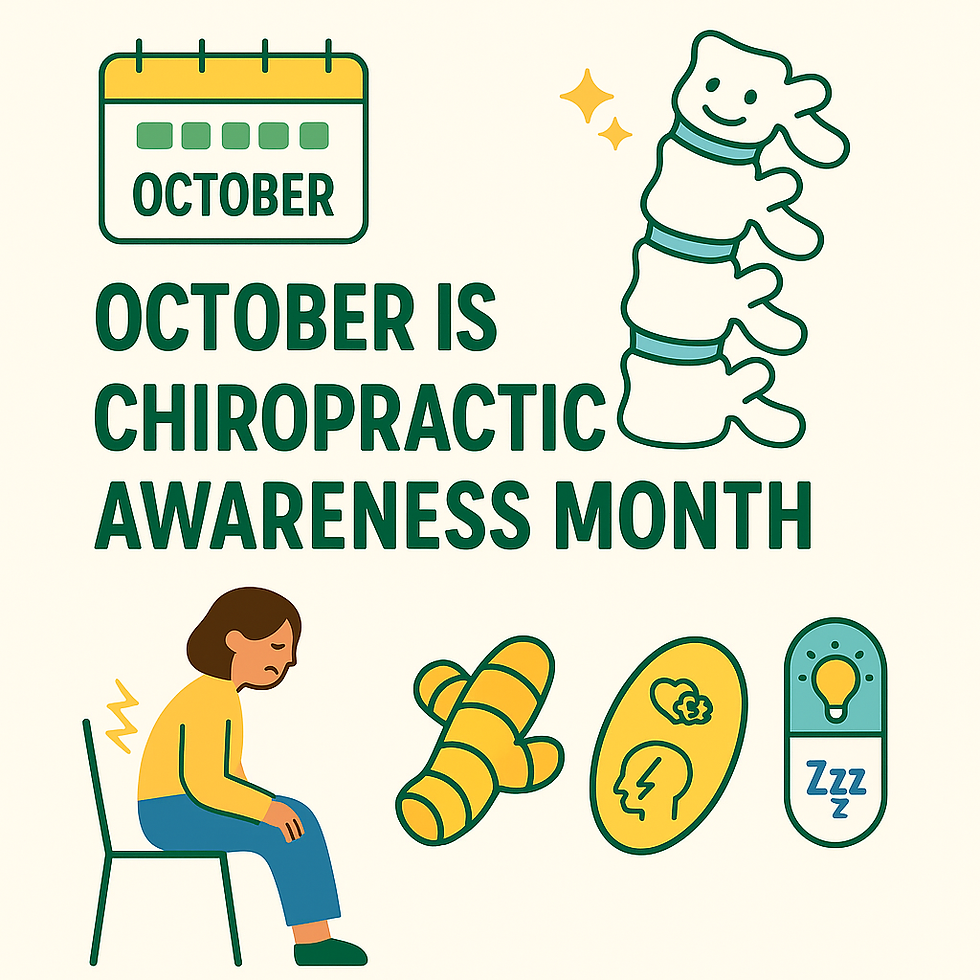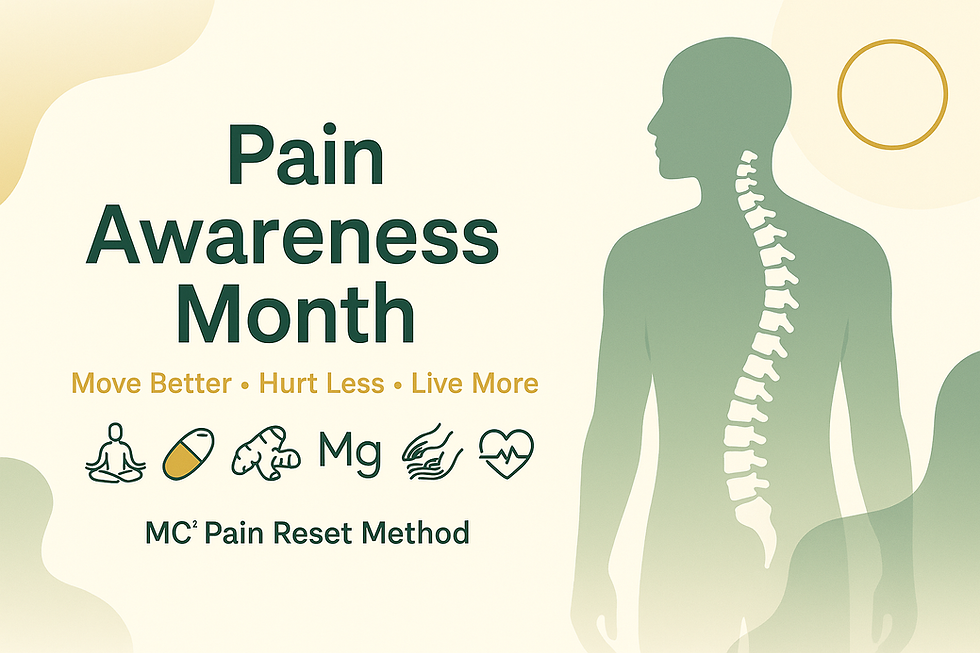Is This Your Brain on Chiropractic?!
- Jacob McNamara
- Jun 22, 2023
- 3 min read
Updated: Aug 30, 2023
When we think of chiropractic care, what often springs to mind are those satisfying clicks and pops that come with spinal adjustments. We imagine relief from backaches, improved posture, and enhanced flexibility. However, recent research is showing us that the impact of chiropractic care is far more profound than previously believed. It doesn't just work wonders for your back—it can actually influence your brain. Let's delve into the science behind how chiropractic care interacts with our brain's interpretation of pain, impacts muscle tone, and boosts overall health and performance.

The Brain, Pain, and Chiropractic Care
Firstly, it's important to note that pain, be it chronic or acute, is processed and understood by our brain. It's our central nervous system's way of signaling that something is wrong. Interestingly, chiropractic care can influence how our brains interpret pain. A study published in the journal "Chiropractic & Manual Therapies" (2019) demonstrated that spinal manipulation can lead to pain reduction and increase pain threshold. Researchers found that spinal manipulation therapy (SMT), a common technique used by chiropractors, can alter central sensitization, an increased sensitivity to pain.
The mechanism behind this effect appears to be the influence chiropractic treatments have on the nociceptive and pain processing areas of our brain. A study in the journal "Scientific Reports" (2019) used functional MRI imaging to show how a single session of chiropractic care altered brain function in chronic pain patients. The authors concluded that the spinal adjustments could modulate the brain's processing of pain, thereby providing relief.
Chiropractic Care and Muscle Tone
Shifting gears, let's look at how chiropractic treatment affects muscle tone. Muscles work in harmony with our skeletal system to provide movement, and if they're out of sync, it can lead to stiffness, discomfort, or injury. Chiropractic adjustments, by realigning the spine, can aid in restoring this balance.
A study published in "Journal of Manipulative and Physiological Therapeutics" (2018) discovered that chiropractic care could positively influence muscle tone and stiffness. Participants showed improvements in muscle tone and a decrease in muscle stiffness immediately after receiving spinal manipulative therapy. These benefits can directly contribute to improved physical performance and lower risk of injury.
Enhancing Health and Performance
With these benefits in mind, it becomes clear how chiropractic care can significantly boost our overall health and performance. A study published in "Brain Science" (2016) found that chiropractic adjustments could lead to changes in cortical excitability, somatosensory processing, and motor control, suggesting potential benefits for athletes seeking to improve their performance.
Moreover, a series of studies featured in the "Journal of Chiropractic Medicine" (2020) proposed a connection between chiropractic care and improved cognitive function. Regular chiropractic adjustments were associated with better reaction times, visual acuity, and even enhanced mental clarity. Such cognitive improvements underline the profound impact chiropractic care can have on our brains and bodies, beyond mere pain relief.
Wrapping Up
So, is this your brain on chiropractic? Research seems to suggest so. The potential for chiropractic care to influence our brain's interpretation of pain, muscle tone, and overall health is not just promising but evidence-backed. As we continue to explore the depths of this connection, it’s clear that chiropractic care extends well beyond simple back cracks. It’s a path towards healthier living and improved performance, all starting with the spine. And it appears our brains have a lot to say about it.
Bialosky, J. E., Beneciuk, J. M., Bishop, M. D., Coronado, R. A., Penza, C. W., Simon, C. B., & George, S. Z. (2019). Unraveling the Mechanisms of Manual Therapy: Modeling an Approach. Journal of Orthopaedic & Sports Physical Therapy, 49(1), 8–18. https://doi.org/10.2519/jospt.2019.7917
Sparks, C., Cleland, J. A., Elliott, J. M., Zagardo, M., & Liu, W. C. (2019). Using functional magnetic resonance imaging to determine if cerebral hemodynamic responses to pain change following thoracic spine thrust manipulation in healthy individuals. Journal of Orthopaedic & Sports Physical Therapy, 49(8), 576-585. https://doi.org/10.2519/jospt.2019.8821
Haavik, H., Niazi, I. K., Jochumsen, M., Sherwin, D., Flavel, S., & Türker, K. S. (2018). Impact of spinal manipulation on cortical drive to upper and lower limb muscles. Brain Science, 7(1), 2. https://doi.org/10.3390/brainsci7010002
Xia, T., Long, C. R., Gudavalli, M. R., Wilder, D. G., Vining, R. D., Rowell, R. M., Reed, W. R., DeVocht, J. W., Goertz, C. M., Owens, E. F., & Meeker, W. C. (2016). Similar effects of thrust and nonthrust spinal manipulation found in adults with subacute and chronic low back pain: a controlled trial with adaptive allocation. Spine, 41(12), E702-E709. https://doi.org/10.1097/BRS.0000000000001398
Kelly, D. D., Murphy, B. A., & Backhouse, D. P. (2000). Use of a mental rotation reaction-time paradigm to measure the effects of upper cervical adjustments on cortical processing: a pilot study. Journal of Manipulative and Physiological Therapeutics, 23(4), 246-251. https://doi.org/10.1016/S0161-4754(00)90197-6




Comments